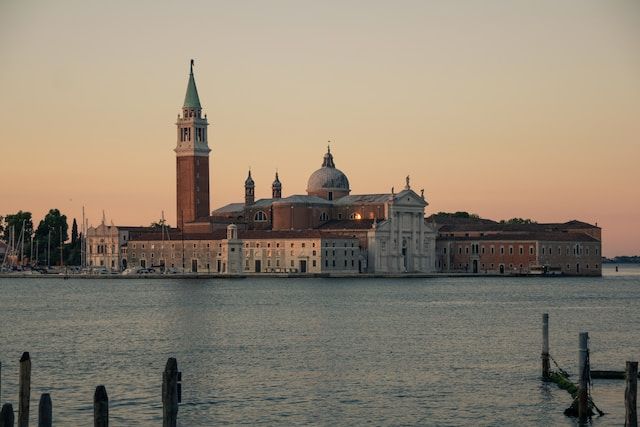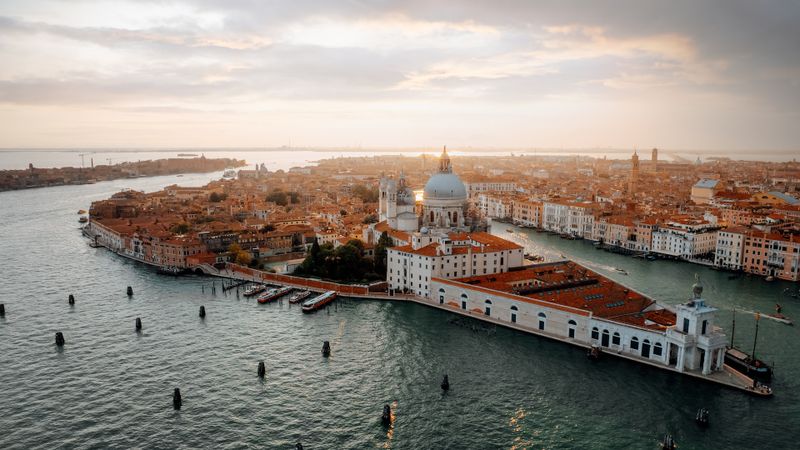La Serenissima, the beautiful city of Venice, has long been celebrated as one of the world's cultural and historical jewels, declared a UNESCO World Heritage Site in 1987.
However, today it faces an unprecedented challenge, with the number of residents in its historic center steadily declining and mass tourism growing unchecked. These factors, together with climate change, threaten to put its status as a UNESCO World Heritage Venice at risk.
In this article, we will explore the challenges the city faces, the measures taken to preserve its heritage, and the warning issued by UNESCO.
A looming threat

The situation in Venice, whose uniqueness and preciousness make it a World Heritage Site, is becoming increasingly critical. The number of residents in the historic center is falling below 49,000, and mass tourism continues to grow unchecked, putting Venice's recognition as a UNESCO World Heritage Site at risk.
Venice's challenges
The lagoon city faces a double threat: out-of-control intensive tourism and climate change. Following the November 12, 2019 flooding that submerged much of the city, significant efforts have been undertaken to address this crisis and preserve Venice's at-risk UNESCO heritage, including the restoration of St. Mark's Basilica and funding earmarked for the restoration of the Jewish ghetto, the oldest in Europe.
The UNESCO warning
Despite all these efforts, UNESCO has recommended that Venice be placed on the list of sites at risk, and this is not the first time the city has faced this threat. The final decision will be made in September, and the fate of Venice's UNESCO heritage at risk is still uncertain.
Climate crisis and mass tourism
The climate crisis endangers Venice's buildings, infrastructure and cultural heritage, while mass tourism threatens to irreparably alter the city's identity. UNESCO's World Heritage Centre has assessed the actions taken so far to reverse this trend as insufficient. Currently, there are 55 sites on the World Heritage List in Danger, and Venice could become one of them, along with the historic center of Odessa starting in 2023.
Why is Venice a UNESCO heritage site?
Venice, with its fascinating network of canals, majestic squares and rich cultural history, was awarded the prestigious title of "World Heritage Site" by UNESCO in 1987. This recognition is rightly deserved, as Venice represents a unique and extraordinary cultural treasure that enchants visitors from all over the world.
One of the main reasons why Venice has been declared a World Heritage Site is its extraordinary architectural heritage. The city is a veritable open-air museum, with its palaces, churches, and bridges dating back centuries. Venetian architecture is a fusion of styles ranging from Gothic to Renaissance and Baroque, creating a fascinating and unique cityscape. Venice's canals, with their palaces reflected in the water, add a touch of magic to the entire city, making it a truly extraordinary place.
The city is also famous for its rich cultural tradition. Venice was an important artistic and musical center during the Renaissance, producing the likes of Titian, Tintoretto and Vivaldi. Venice's cultural heritage is reflected in its museums, artworks and music, helping to keep the history and beauty of this unique city alive.
In addition, Venice has been a center of trade and cultural exchange between the East and the West for centuries. This privileged position has deeply influenced its culture and architecture. Eastern influences are evident in many aspects of Venetian life, including textiles, jewelry, and cuisine.
Venice's environmental fragility is another reason why it has been recognized by UNESCO. The city is located on a series of islands in the Venetian lagoon and is vulnerable to sea level rise and tides. Water management has been a fundamental part of Venice's history, and its unique hydraulic solutions are an extraordinary example of engineering.
In summary, Venice has been included in the UNESCO World Heritage List because of its extraordinary architectural beauty, its rich cultural heritage, its historic position as a center of exchange between cultures, and the importance of its hydraulic solutions.
This unique city embodies a priceless heritage that deserves to be preserved for future generations, and its recognition by UNESCO is a tribute to its greatness and global significance.
Conclusion
The fate of Venice's UNESCO heritage at risk is uncertain, but it is indisputable that the city faces significant challenges. The protection of this cultural and historical treasure requires collective global efforts. As Venice continues to struggle with uncontrolled mass tourism and climate change, it is critical that it be preserved for future generations.
The final decision on possible inclusion on the list of sites at risk will be made next September, and the world will be watching closely to see what the fate of Venice as a UNESCO heritage site at risk will be. We hope that the city can strike a balance between protecting its unique heritage and managing tourism in a sustainable way to secure its future.

